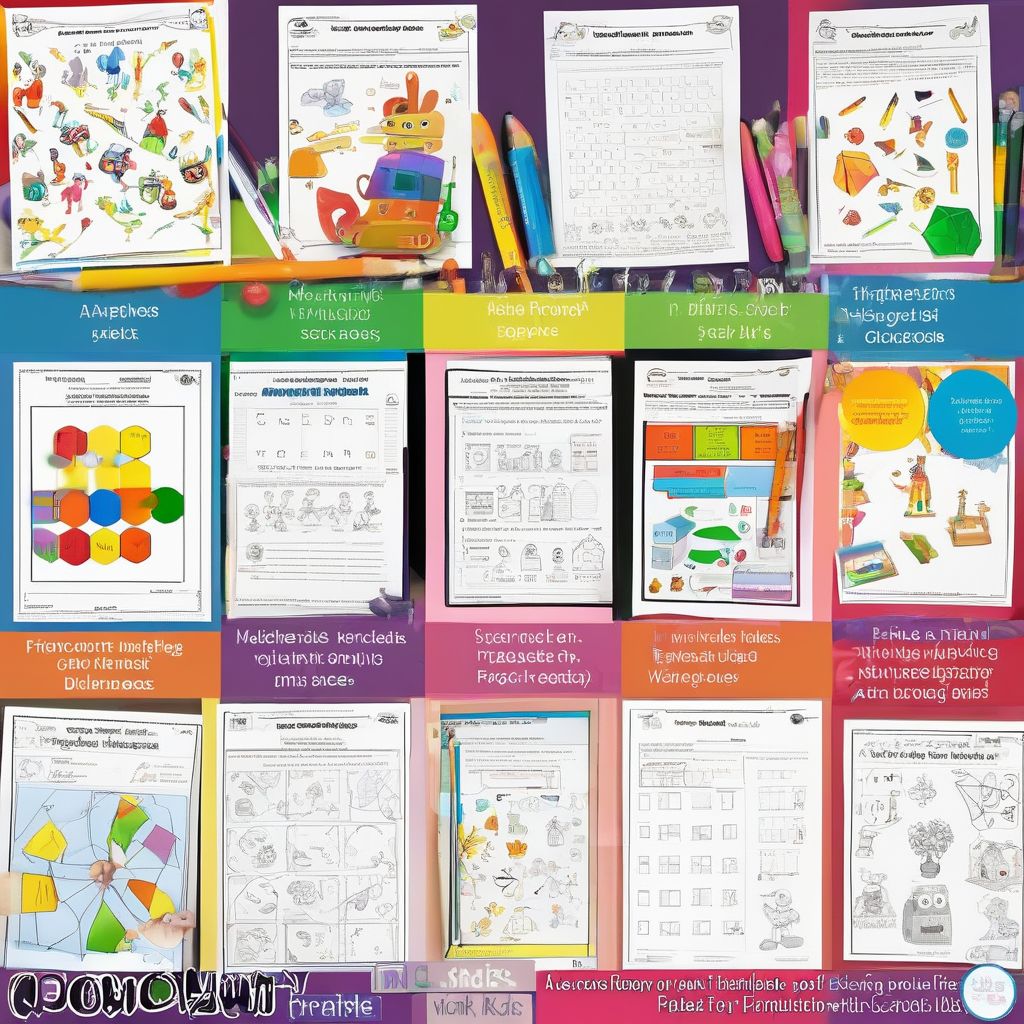Remember those colorful workbooks filled with fun activities we used to love as kids? Times have changed, but the magic of printables and worksheets in children’s learning is still very much alive! As a nutritionist and meal planning coach, I see the power of engaging tools in making healthy habits stick. Just like a colorful plate of veggies entices kids to eat better, well-designed printables can make learning fun and effective.
So, whether you’re a parent, teacher, or homeschooling superhero, let’s dive into how to use these valuable resources to make learning a joyful adventure for your little ones!
Why Printables and Worksheets Still Matter in the Digital Age
In our tech-savvy world, you might wonder if printables and worksheets are still relevant. The answer is a resounding YES! Here’s why:
1. Hands-on Learning and Fine Motor Skills
The simple act of holding a crayon, tracing a letter, or cutting out shapes does wonders for developing those crucial fine motor skills needed for writing, drawing, and even tying shoelaces!
2. Screen-Free Engagement
We all know too much screen time can be a concern. Printables offer a fantastic way for kids to unplug, engage in focused learning, and give those precious little eyes a break from the digital world.
3. Visual and Kinesthetic Learning
For visual and kinesthetic learners (those who learn best by seeing and doing), printables are a game-changer. They bring learning to life in a way that textbooks sometimes can’t.
4. Versatility and Customization
From alphabet practice to math problems to creative writing prompts, printables can be tailored to any subject and age group. You can even personalize them with your child’s favorite themes and characters.
 Printable Worksheets for Kids
Printable Worksheets for Kids
How to Choose the Right Printables and Worksheets
With a treasure trove of printables available online, how do you pick the perfect ones? Here are a few tips:
1. Age and Developmental Stage:
Consider your child’s age and what they’re ready to learn. Look for activities that are challenging but not overly frustrating.
2. Learning Style:
Does your child thrive on visual stimulation, hands-on activities, or a combination of both? Choose printables that cater to their unique learning style.
3. Interests and Themes:
Spark their enthusiasm by selecting printables that align with your child’s passions, whether it’s dinosaurs, unicorns, or outer space!
4. Curriculum Alignment (For Teachers and Homeschoolers):
If you’re following a curriculum, ensure the printables complement the concepts being taught.
Creative Ways to Use Printables and Worksheets
Now for the fun part – bringing those printables to life!
1. Learning Centers:
Create designated learning centers in your classroom or home with themed printables. For example, a math center with number recognition worksheets, a writing center with story prompts, or a science center with anatomy diagrams.
2. Interactive Games:
Turn worksheets into engaging games! Cut out math problems and have kids race to solve them, or create a scavenger hunt with clues hidden in word puzzles.
3. Arts and Crafts Integration:
Combine printables with art supplies! Use coloring pages as stencils for craft projects, cut out and assemble 3D shapes from geometry worksheets, or design puppets based on characters from reading comprehension activities.
4. Independent Practice and Review:
Printables are fantastic for reinforcing what kids have learned. Use them for independent practice, homework assignments, or as a fun way to review before quizzes and tests.
5. Personalized Learning Journals:
Create personalized learning journals by compiling completed worksheets, drawings, and written work. This allows children to track their progress and take pride in their accomplishments.
 Kids Engaging with Printable Worksheets
Kids Engaging with Printable Worksheets
Tips for Making the Most of Printables and Worksheets
Here are some extra tips to maximize the effectiveness of your printables:
- Set a Purposeful Learning Environment: Create a dedicated workspace with minimal distractions where your child can focus on their activities.
- Introduce One Concept at a Time: Avoid overwhelming children with too much information. Start with simple concepts and gradually increase the complexity.
- Make it Hands-On: Encourage active participation! Use manipulatives like counters, blocks, or playdough alongside worksheets to make learning more concrete.
- Provide Positive Reinforcement: Celebrate your child’s efforts and achievements, no matter how small. Positive encouragement goes a long way in building their confidence and love for learning.
- Don’t Be Afraid to Get Creative: Think outside the box and adapt printables to suit your child’s needs and interests. Let them add their own personal flair and have fun with the process!
Conclusion
Printables and worksheets remain valuable tools in the digital age, providing children with opportunities for hands-on learning, screen-free engagement, and personalized education. By choosing age-appropriate and engaging materials, incorporating them creatively into lessons and activities, and fostering a positive learning environment, parents and educators can harness the power of printables to make learning a joyful and rewarding experience for every child. Remember, it’s not about replacing technology but using it alongside traditional tools to create a well-rounded and effective learning journey.
What are your favorite ways to use printables and worksheets with your children or students? Share your ideas and experiences in the comments below!
[amazon bestseller=”printable learning activities for kids”]
